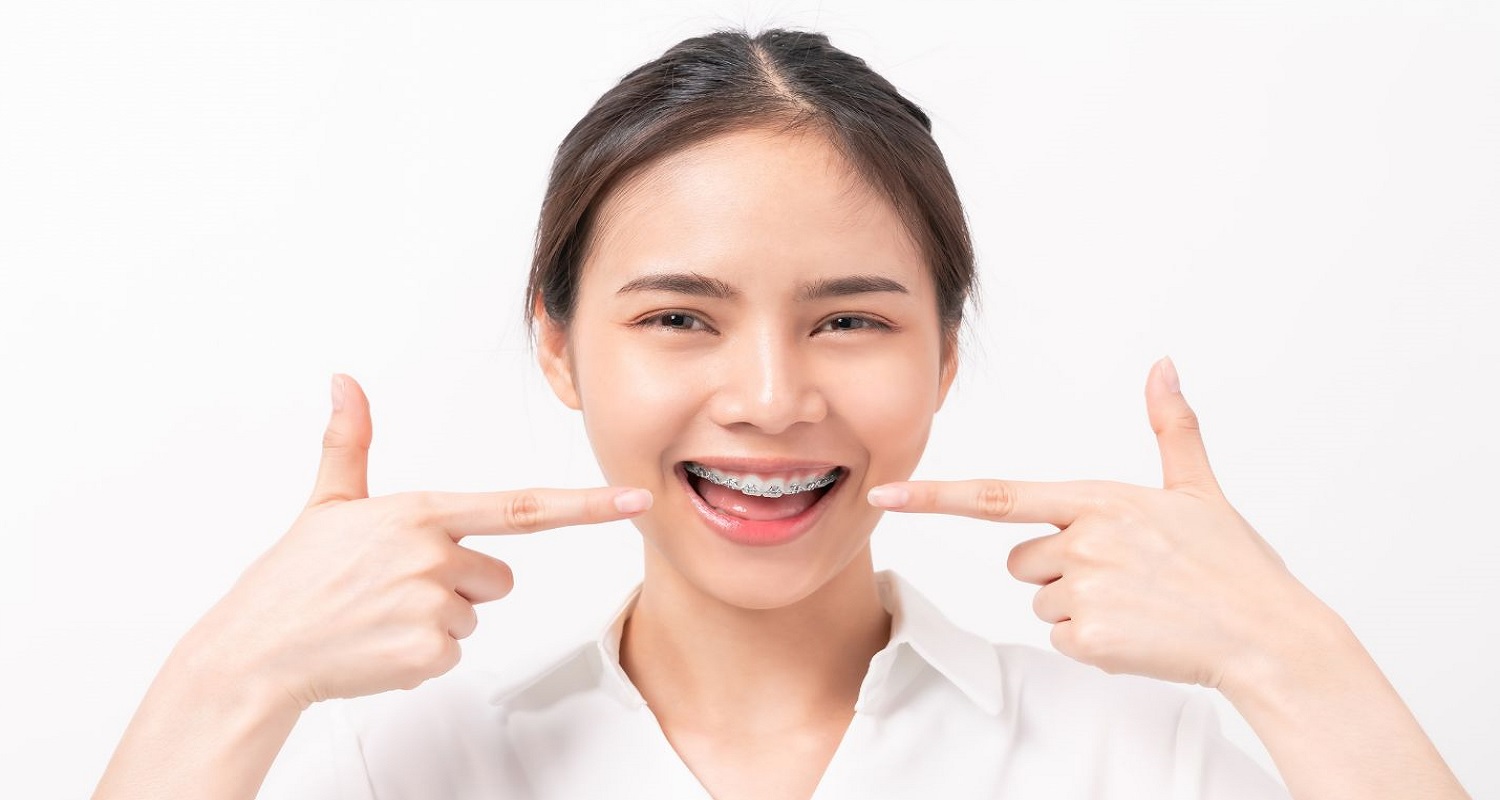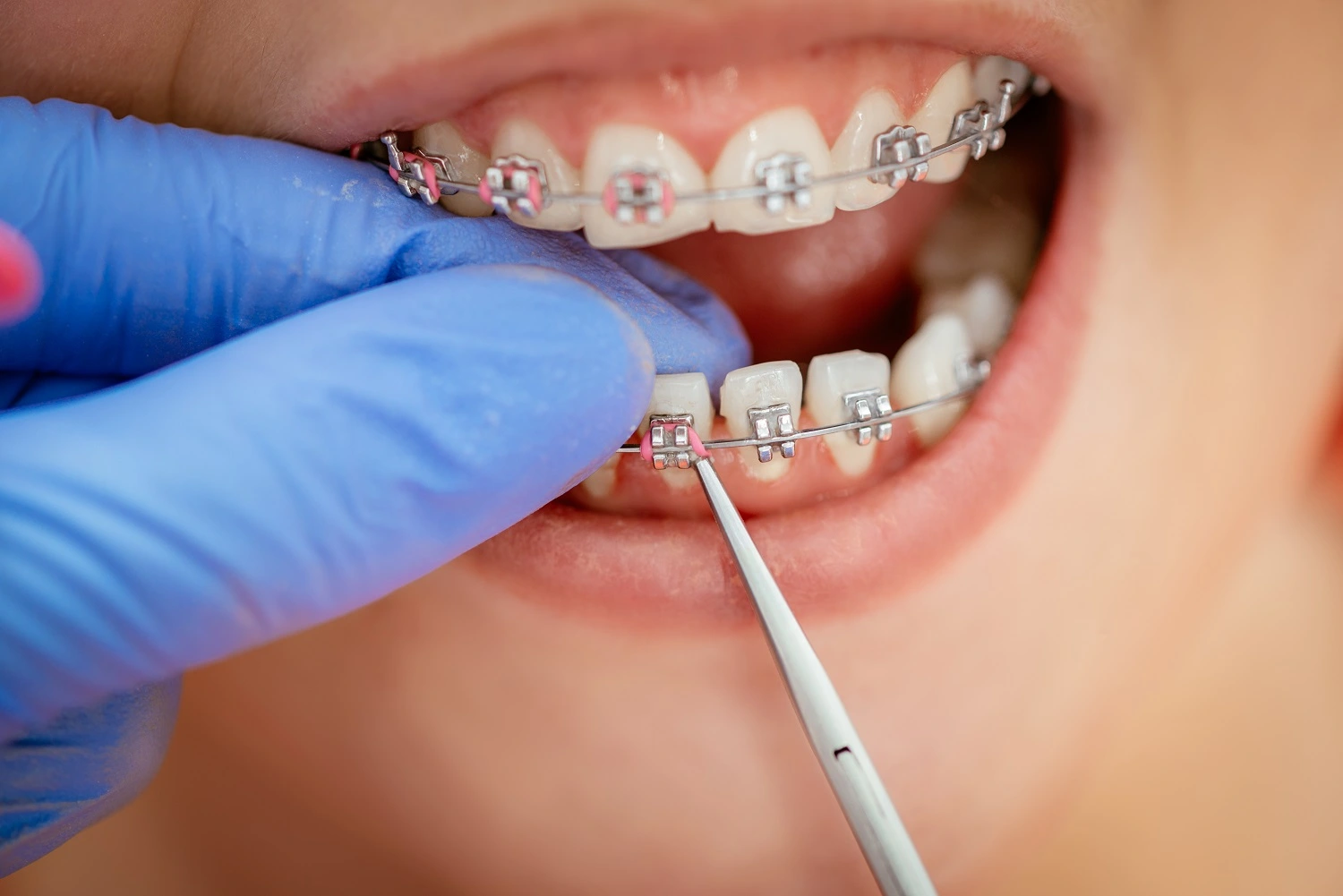Last Updated on: 21st October 2024, 01:08 pm
Orthodontic treatment is a dental specialty that corrects the position of the teeth to restore their function but one of the concerns many people have is whether there are cavities caused by braces.
Before digging into that, let’s talk about two types of orthodontic treatments:
Interceptive: It is done before the age of 12, mainly seeking to prevent permanent teeth from coming out crooked or in a bad position. In this type of orthodontics, removable appliances are used, that is, children can take them off and put them back on.
Corrective: It is done after the age of 12 or when the permanent dentition has been completed. This type of orthodontics seeks to achieve the ideal position of the teeth. For this, fixed devices or brackets are used. Brackets can be metallic or ceramic. They are glued to the teeth and joined with a metallic arch that helps with the movement and alignment of the teeth. At present, orthodontic treatment is growing as a trend, but there is still prejudice held by patients who link braces with the appearance of caries as a result of orthodontics.
This discourages many patients from starting treatment. There will always be myths on the subject causing patients to delay or not make the right decision, but in most cases, orthodontics is not a luxury but rather a necessity to improve aesthetics and oral health.
Are there cavities caused by braces?
Devices as such do not cause cavities; however, they facilitate the accumulation of bacteria and food debris trapped between the teeth. Brackets make it difficult to remove food debris, causing tooth decay. Thus, it is advisable to treat damaged teeth with carious lesions and perform dental cleaning before starting treatment. Otherwise, the cavities could worsen, causing a larger lesion and even pain.

What other problems can braces cause?
1. Gingivitis
By favoring the accumulation of bacterial plaque, this condition increases the possibility of developing inflammation in the gum.
2. Halitosis
Halitosis or bad breath is one of the most common causes of consultation for patients with orthodontic appliances, but this is mainly due to bad hygiene.
3. Ulcers
They are caused by the rubbing of the appliances with the soft tissues of the mouth. They are not serious and do not represent a danger; however, they can be painful and annoying, especially when eating.
Care and hygiene during the use of brackets
Dental appliances or brackets retain food, making it more difficult to remove bacterial plaque, so it is very important to increase the frequency of brushing, as well as the duration.
-
- Carefully brushing each tooth, of course, will take a little more time and dedication, but this will prevent tartar problems or other types of infections.
- The brushing time of a patient who uses brackets is between 5 minutes to 8 minutes.
- Brushing must be soft, careful, and meticulous to prevent the brackets from falling off.
- Keep teeth and gums extremely clean; If the gums bleed, they are inflamed because you are not brushing well.
- It is necessary to brush after each meal to remove food from the rackets and prevent food debris from accumulating.
- It is necessary to use a special brush for orthodontics, dental floss (super floss dental floss is recommended), Interprox (small brush), and toothpaste, all in order to perform a better dental cleaning. It is best to buy a portable kit and always carry it in a bag. The less time the food debris has to settle on the teeth, the probability of dental disease decreases.
- No matter what brand or type of toothbrush you use, try not to use those with hard bristles because they can damage your gums in the long run.
- The use of mouthwash will ensure that all debris particles and microorganisms are removed. You have to rinse after brushing for about 30 seconds while swishing. You can do it with water or with a specific mouthwash.
- Attend all check-ups with the orthodontist as the success of the treatment largely depends on this.
- Get professional cleanings at least twice a year.
Recommendations during the use of brackets
While you have braces it is important to follow a balanced diet and keep the following in mind:
-
- Snacks and fruit should be cut into small pieces before eating.
- Sticky foods such as chewing gum should be avoided.
- Do not eat hard things like popcorn, caramels, almonds, etc.
- Avoid sugary foods as these can make it easier for plaque to accumulate around the brackets.
- Avoid biting your nails and pens.
What happens after removing the orthodontics?
If during orthodontic treatment good hygiene habits were followed and all the dentist’s recommendations were followed, when the orthodontics are removed, the teeth should not present a variation in color and appearance. On the contrary, if the recommendations were not followed or if cleaning was difficult, upon removing the appliances, the teeth may present white or yellowish spots that slightly affect the appearance of the teeth.

It is important not to be alarmed if any of these cases occur. The dentist is trained to solve the aesthetic appearance of teeth by “camouflaging” the stains. Any of the following treatments can be performed: Microabrasion: This method is the least invasive. It consists of the superficial removal of defective or pigmented enamel by means of a pressurized air jet on the tooth. This method is preferred when the stain is very light. Aesthetic veneers: This method is more invasive since a good part of the tooth structure must be removed. Veneers are more aesthetic since they mimic the natural color perfectly. They can be direct, that is to say, the dentist will make them with resin in the office. The indirect approach is to make the veneers a laboratory. A minimum of two appointments are required. When undergoing orthodontic treatment, it is best to follow the recommendations of the dentist and orthodontist, in addition to having good oral hygiene habits and a balanced diet to avoid getting cavities caused by braces. Contact us If you have any questions about this or other topics, you can contact us at Channel Islands Family Dental as well as our page on Facebook. We look forward to your visit and we will make a timely diagnosis. Our dentists in Oxnard, Santa Paula, Ventura, Newbury Park, and Port Hueneme will be able to guide you toward the best treatment to take care of your health and give you back your best smile. Bibliography
- Bosch, A. (November 1, 2007).offarm. Obtained from Oral Hygiene. Products used and basic recommendations:https://www.elsevier.es/es-revista-offarm-4-articulo-higiene-bucodental-productos-utilizados-recomendaciones-13112891
- Dental tribune. (09 May 2018).Dental tribune. Obtained from The importance of oral hygiene in orthodontics:https://la.dental-tribune.com/news/la-importancia-de-la-higiene-oral-en-ortodoncia/
- Ilze Angela Arce Coronado, E.V. (May 09, 2022).Guayaquil University. Obtenido de oral and periodontal health in orthodontic treatments with self-ligating system and conventional ligation: http://portal.amelica.org/ameli/journal/611/6113144005/html/
- Joana Idalith Orta Mendoza, D.H. (June 1, 2022).Scientific bulletin Institute of Health Sciences Autonomous University of the State of Hidalgo. Obtained from Effectiveness of infiltrating resins on non-cavitated caries lesions in enamel: Bibliographic review:https://repository.uaeh.edu.mx/revistas/index.php/ICSA/article/view/8216
- Osvaldo Jimenez Marin, LM (December 3, 2021).Spiritus medical gazette. Obtenido de Oral hygiene in patients with orthodontic treatment.
- Tortolini P, FB (July 01, 2011).Advances in odontostomatology. Retrieved from Orthodontics and periontics:https://scielo.isciii.es/scielo.php?script=sci_arttext&pid=S0213-12852011000400004


